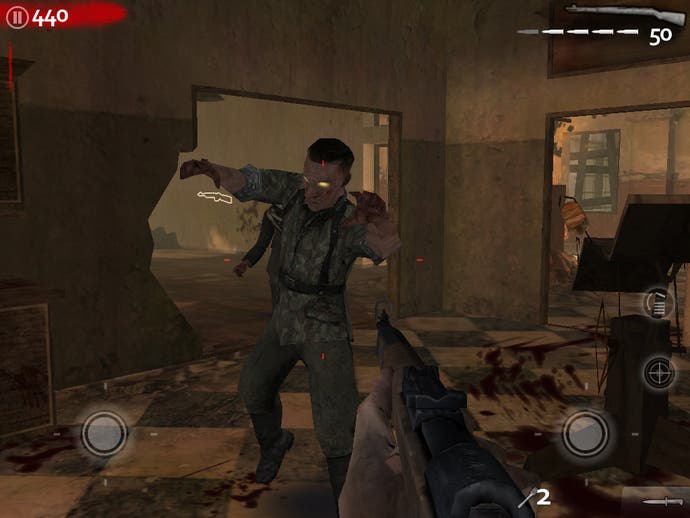Digital Foundry vs. iPad
The next big small thing dissected.
Bizarre's classic is one of the greatest shooters ever made, but it's interesting to note that the iPad version does have something in common with many other iPad games titles available now, control issues apart: there's an unavoidable impression that it has been developed with very little, if any, playtesting on the final hardware.
Why else would screen rotation not be supported, meaning that your headphone cable is always in the way of your left hand? Why else would the smart bomb button be situated in the centre of the screen, meaning a desperate lunge (which usually misses) to get to it, leaving you entirely defenceless?




Several developers have told us that they did not have access to the final iPad until the machine was officially on sale: a state of affairs that is patently ridiculous but oh-so-very-Apple, meaning that many titles were developed solely on the simulator software the platform holder ships with its SDK. The fact that developers should now have access to the actual hardware will clearly help the quality of the software.
We can expect gameplay performance to improve on iPad, though, because the majority of the games we've seen to date are really and truly basic iPhone ports, probably not exercising any of the power of the OpenGL ES 2.0 support.
In effect, there's a very strong chance that what we're actually seeing here are non-accelerated 3D games boosted by the higher clockspeeds of the iPad hardware, but held back by the immense requirements imposed on the fill-rate by the 1024x768 resolution.
Big names in the industry are planning more widescale support. At GDC, Epic Games talked about how the iPhone 3GS version of Unreal Engine 3 was CPU-limited, and not really tapping into the potential of the graphics chip. Even with the fill-rate differential, Epic's Mark Rein tells us that the firm has the "tech demo running very nicely on iPad" and promises that we'll get a look at E3. Sounds intriguing.


This feature began by pointing out that iPad criticism seems to be centred entirely towards what it hasn't got while oblivious to overall experience it actually delivers. The value of this device in terms of what it actually delivers is pretty immense, but as a piece of hardware it should be made clear that the iPad is not above reproach.
As a media tablet, iPad excels with a truly phenomenal screen, but the inclusion of just one speaker for mono-only audio is pretty shocking. Bearing in mind how much Apple is invested in music and media, the lack of dual speakers is just downright bizarre.
Also irritating is the lack of a well-realised TV output. There's a VGA dongle you can buy that only works with things that the platform holder wants it to work with, but the bottom line is that Apple has created an HD media player that has no actual HD playback facilities. Similarly, the omission of a webcam for face-to-face comms on Skype is a big miss.
From a business perspective, what Apple has achieved here is quite remarkable. Technologically it always manages to leave room for a viable upgrade path, with a regular-as-clockwork product refresh. It has created a family of products that expands annually, offering greater performance and more functionality - it has a platform, and a brand, that is almost constantly evolving with very few technological quantum leaps that disenfranchise the existing userbase (OpenGL ES 2.0 is probably the only one we've seen so far).
What this does mean, however, is that few developers want to push the spec, preferring to keep their apps compatible across the range. This, in part, may explain the relatively poor showing of iPad games at launch. However, as the iPhone 3G is gradually phased out, and more Open GL ES 2.0 devices appear, we should see something of a leap in the graphical quality of 3D titles.
There is also the sense that the launch iPad isn't quite the definitive article, and that the inevitable successor next year will correct these flaws. While the concept of quickly upgrading will annoy many, at least you can be assured that the resale value of your existing kit will remain high - it's just the way it is with Apple hardware.
In the here and now though, it is really difficult to be anything other than impressed with what the iPad delivers. Browsing is a wonderful experience, mobile media playback is unsurpassed, e-book functionality is solid, battery life is simply incredible and the user interface is exactly what you would expect from Apple: beautifully intuitive and joyous to use.








